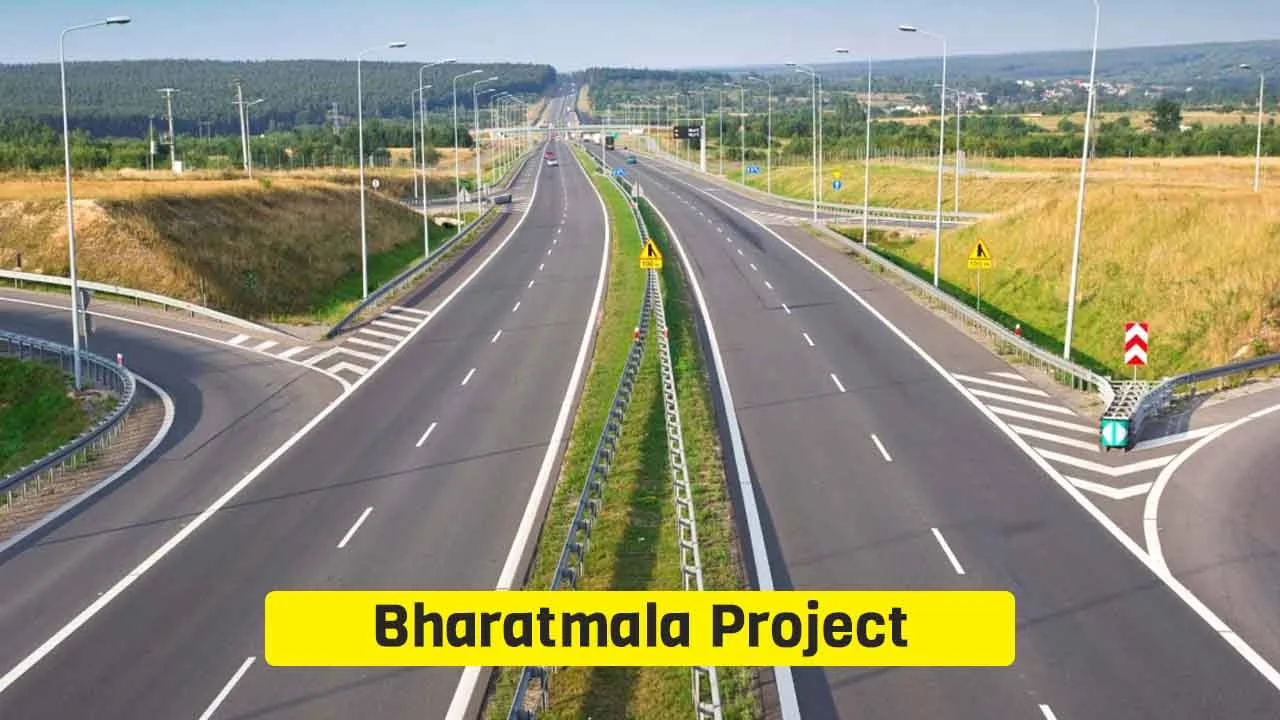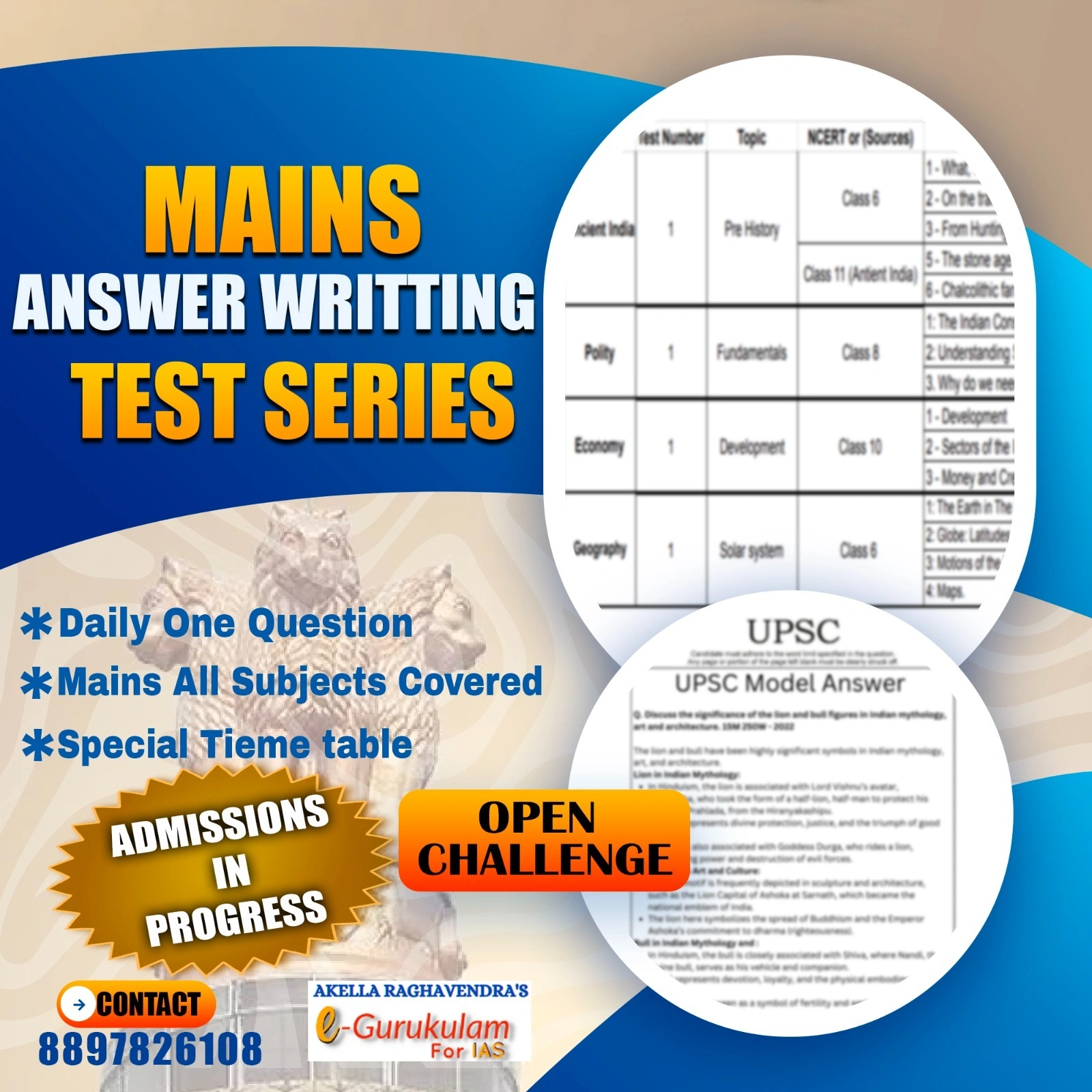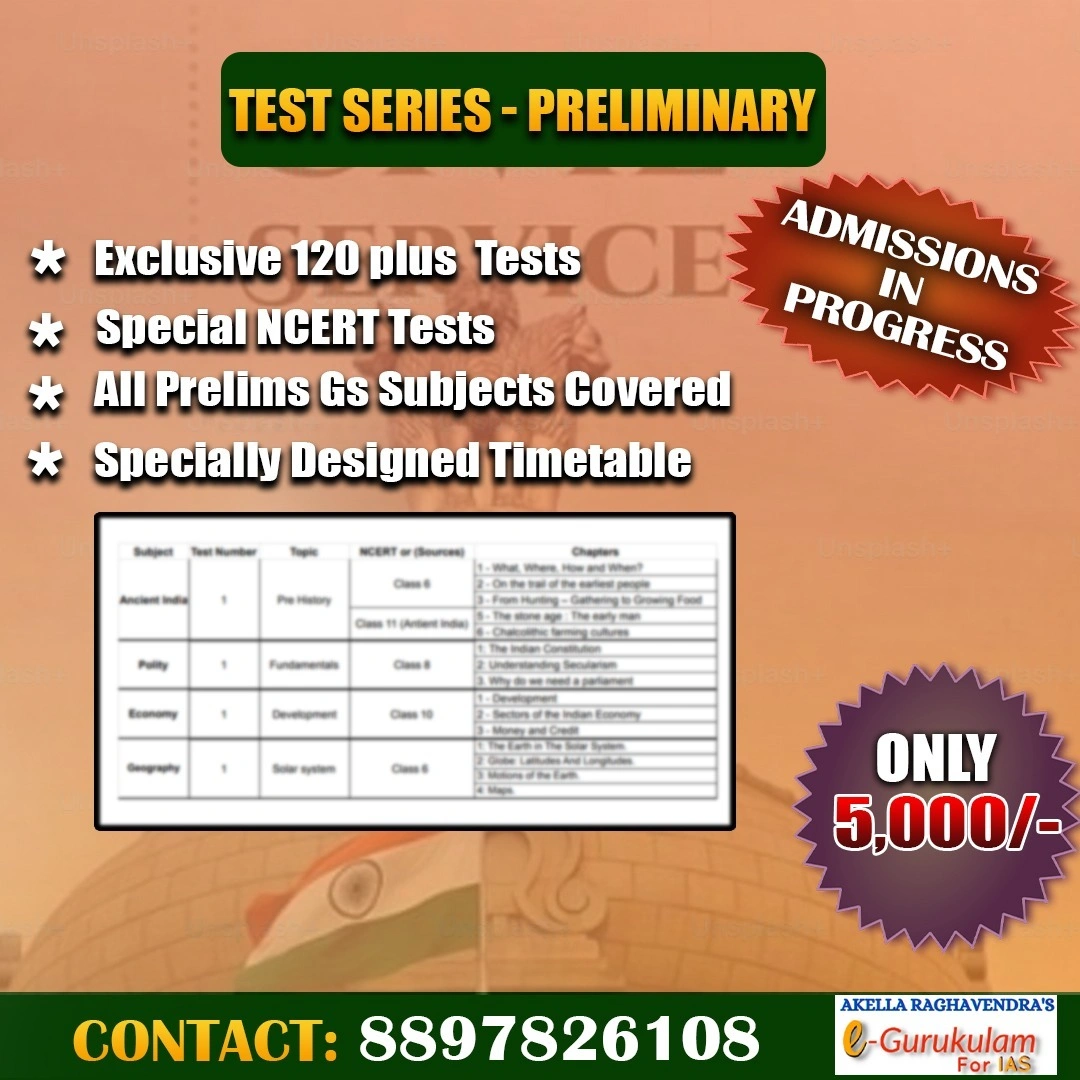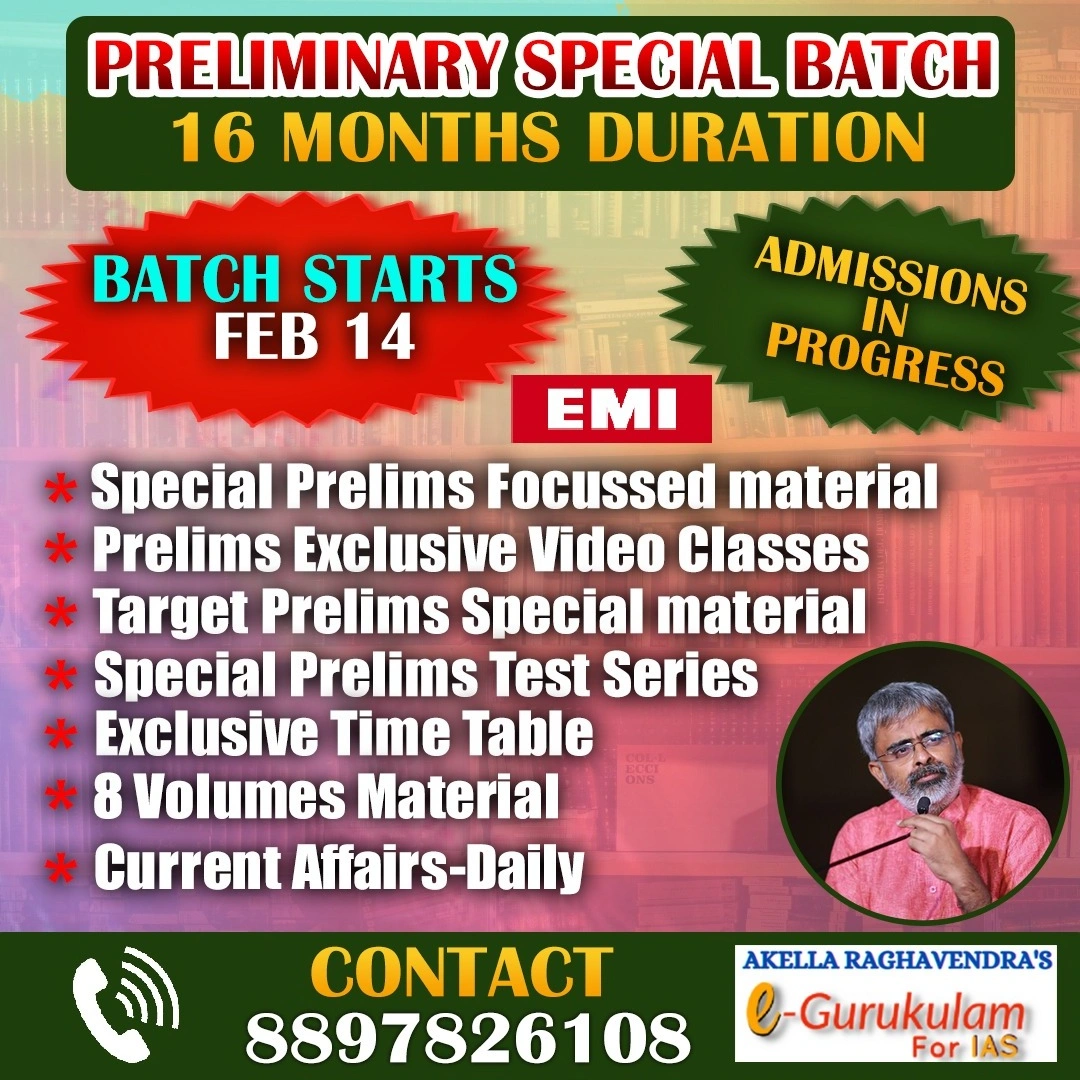Bharatmala Pariyojana & Expressway Expansion
1. Introduction to Bharatmala Pariyojana
Bharatmala Pariyojana is a flagship highway development program launched by the Ministry of Road Transport & Highways (MoRTH) to improve connectivity and logistics efficiency across India. It aims to optimize road transport for the seamless movement of goods and people while reducing congestion and travel time.
- Introduction to Bharatmala Pariyojana
Bharatmala Pariyojana is a flagship infrastructure project launched by the Ministry of Road Transport & Highways (MoRTH) to revolutionize India's road network. The initiative focuses on developing economic corridors, expressways, national highways, border roads, and port connectivity projects to enhance logistics efficiency and trade.
- Objectives of Bharatmala Pariyojana
- Boost Economic Growth: Strengthen India’s highway network to improve trade and commerce.
- Enhance Connectivity: Improve road linkages between industrial hubs, rural areas, and ports.
- Reduce Logistics Costs: Decrease transportation expenses, benefiting industries and consumers.
- Strengthen Border Infrastructure: Facilitate defense movement and international trade.
- Develop Sustainable Highways: Implement green corridors, solar-powered expressways, and rainwater harvesting.
- Bharatmala Pariyojana: Phases & Scope
Phase 1 (Launched in 2017 - Ongoing)
- Total Length: 34,800 km
- Budget: ₹5.35 lakh crore (~$36 billion)
- Components:
- Economic Corridors: 26,000 km
- Inter-corridors & Feeder Roads: 6,000 km
- National Corridor Efficiency Improvement: 13,000 km
- Border & International Connectivity Roads: 2,000 km
- Coastal & Port Connectivity Roads: 2,000 km
- Expressways: 1,800 km
Current Status: As of 2019, delays due to land acquisition issues, bureaucratic approvals, and funding constraints have slowed progress. The government has since streamlined approval mechanisms to expedite implementation.
Phase 2 (Announced for Launch)
- Total Length: 5,000 km
- Focus Areas:
- Expanding Expressways and Highways to new economic zones.
- Enhancing last-mile connectivity for industries and logistic parks.
- Strengthening rural and semi-urban road networks.
- Incorporating learnings from Phase-1 to fast-track approvals and avoid land acquisition delays.
Key Improvement from Phase 1:
- Early DPR (Detailed Project Report) Preparation: To minimize cost escalations due to unforeseen geographic, climatic, and traffic issues.
- Streamlining Approvals: To prevent delays and encourage greater private sector investment.
- Balanced State-Funding Mechanism: To ensure equitable infrastructure investment across all states.
- Major Expressways under Bharatmala Pariyojana
- Delhi-Mumbai Expressway
- India’s longest expressway (1,386 km), costing ₹1 lakh crore.
- 8-lane, access-controlled, greenfield expressway with expandable 12 lanes.
- Route: Delhi → Haryana → Rajasthan → Madhya Pradesh → Gujarat → Maharashtra.
- Impact:
- Reduces travel time from 24 hours to 12 hours.
- Cuts fuel costs and logistics expenses.
- Boosts industrial growth and job creation.
- Green corridor initiative with 2 million trees planted.
- Ganga Expressway
- Length: 594 km, 6-lane expressway (expandable to 8 lanes).
- Cost: ₹37,350 crore.
- Route: Meerut → Prayagraj, covering 12 districts in Uttar Pradesh.
- Impact:
- Faster connectivity between Eastern and Western UP.
- Boosts agriculture, trade, and tourism in the Ganga basin.
- Military utility: Proximity to airbases for defense operations.
- Bundelkhand Expressway
- Length: 296 km, 4-lane expandable to 6 lanes.
- Cost: ₹15,000 crore.
- Route: Chitrakoot → Banda → Jalaun → Agra-Lucknow Expressway.
- Impact:
- Reduces travel time and increases connectivity in rural UP.
- Boosts defense manufacturing (Defense Corridor).
- Encourages industrialization in less developed districts.
- Purvanchal Expressway
- Length: 341 km, 6-lane expandable to 8 lanes.
- Cost: ₹22,500 crore.
- Route: Lucknow → Ghazipur (near Bihar border).
- Impact:
- Improves connectivity for Eastern UP.
- Reduces fuel costs and carbon footprint.
- Strategic airstrip for emergency fighter aircraft landings.
- Gorakhpur Link Expressway
- Length: 91 km, 4-lane expandable to 6 lanes.
- Cost: ₹5,876 crore.
- Route: Gorakhpur → Ambedkar Nagar → Sant Kabir Nagar → Azamgarh.
- Impact:
- Strengthens connectivity between Gorakhpur and Purvanchal Expressway.
- Enhances trade & logistics in UP’s eastern belt.
- Delhi-Mumbai Expressway
- Economic & Strategic Impacts of Bharatmala &
Expressways
- Economic Growth & Trade Expansion
- Reduces logistics cost from 14% of GDP to 8%.
- Creates 50 lakh+ direct and indirect jobs.
- Enhances industrial connectivity for SEZs, food parks, and textile hubs.
- Connectivity & Regional Development
- Boosts rural connectivity: Provides faster access to markets, hospitals, and educational institutions.
- Strengthens border roads: Facilitates faster military movements.
- Enhances international trade: Links to Bangladesh, Nepal, Bhutan, and Myanmar.
- Environmental & Sustainability Benefits
- Green corridors with tree plantations.
- Solar energy-powered expressways.
- Rainwater harvesting and eco-friendly designs.
- Tourism & Cultural Boost
- Improved access to Varanasi, Prayagraj, Jaipur, Ujjain, and Rishikesh.
- Faster travel for pilgrimage routes (e.g., Ayodhya, Kashi Vishwanath, Kedarnath).
- Economic Growth & Trade Expansion
- Challenges in Implementation
- Land Acquisition & Rehabilitation
- High cost and delays due to land acquisition disputes.
- Need for fair compensation and rehabilitation plans.
- Funding & Financial Sustainability
- Public-Private Partnerships (PPP) for financing.
- Toll revenues for road maintenance.
- Environmental & Social Concerns
- Impact on forests and wildlife corridors.
- Displacement of villages and local communities.
- Land Acquisition & Rehabilitation
Bharatmala Pariyojana and expressways like Delhi-Mumbai, Ganga Expressway, and Purvanchal Expressway are transforming India’s infrastructure landscape. These projects enhance regional connectivity, improve logistics efficiency, and promote economic growth.

Key Takeaways for Phase 2 Success:
- Early planning & faster approvals.
- Balanced state funding & private investment.
- Use of smart road technology & green initiatives.
PM GatiShakti National Master Plan
- Introduction
PM GatiShakti is a comprehensive digital infrastructure planning platform launched on October 13, 2021 to ensure integrated and efficient infrastructure development in India. This initiative brings together 44 Central Ministries and 36 States/UTs on a unified GIS-based platform to enhance multimodal connectivity and streamline project implementation.
- Aim: To ensure seamless and efficient movement of goods, services, and people by integrating road, rail, air, and waterway transport.
- Core Focus: Faster project approvals, reduced costs, and increased logistics efficiency.
- Sectors Covered: Roads, Railways, Ports, Airports, Energy, Logistics, and Urban Planning.
- Key Features of PM GatiShakti
- Integrated Planning Across Ministries
PM GatiShakti integrates infrastructure projects across various government schemes, including:
- Bharatmala Pariyojana (Highway Development)
- Sagarmala (Port-led Connectivity)
- UDAN (Regional Air Connectivity)
- Railway Expansion
- Energy & Renewable Infrastructure
- Digital National Master Plan (NMP)
- A GIS-based portal integrating 1,614+ data layers for real-time infrastructure planning.
- Helps identify infrastructure gaps and avoid duplication of efforts.
- Artificial Intelligence & Big Data for better decision-making.
- District-Level Planning & Implementation
- District Master Plan (DMP) Portal helps local governments in identifying infrastructure gaps and planning new projects.
- Beta version launched for 28 aspirational districts with nationwide rollout planned by March 2025.
- Integrated Planning Across Ministries
- Key Achievements Under PM GatiShakti
- Transportation & Logistics
- MoRTH (Ministry of Road Transport & Highways) planned 8,891 km of roads using NMP.
- Railways planned 27,000 km of new railway lines and accelerated land surveys from 57 to 449 per year.
- Renewable Energy Corridor: 13 GW project in Ladakh for interstate power transmission.
- Urban & Social Infrastructure
- Goa used the platform for flood management.
- Uttar Pradesh used NMP to identify school locations in underserved areas.
- Gujarat’s Coastal Corridor reduced NoC clearances from 28 to 13, improving connectivity and tourism.
- Ministry of Health mapped healthcare infrastructure to plan new hospitals.
- Transportation & Logistics
- PM GatiShakti & Bharatmala Pariyojana: A Strategic Link
PM GatiShakti enhances the efficiency of Bharatmala Pariyojana by:
- Optimizing highway routes based on demand and logistics patterns.
- Reducing land acquisition delays through pre-planned corridors.
- Synchronizing highway construction with railway, port, and industrial zones.
- Boosting India’s Logistics Performance Index (LPI) by improving multimodal transport.
- National Logistics Policy (NLP) & GatiShakti
- Launched in 2022, NLP aligns with GatiShakti to reduce logistics costs from 14% of GDP to 8%.
- Unified Logistics Integrated Platform (ULIP) integrates 33 logistics-related systems across 10 Ministries.
- Logistics Data Bank (LDB) tracks 100% of India’s EXIM cargo in real-time using IoT & Big Data.
- State Logistics Plans (SLPs): 26 States & UTs have aligned with NLP.
- PM GatiShakti Sanchar Portal
- A Centralized Right of Way (RoW) Portal was launched in May 2022.
- Facilitates faster approvals for telecom infrastructure projects.
- Integrated with 36 States/UTs & key ministries (Railways, MoRTH, MoEFCC, MoD).
- Supports rapid rollout of 5G – 2.11 lakh applications approved as of October 2024.
- Future Roadmap
PM GatiShakti is transforming India’s infrastructure by enabling:
- Integrated Planning & Execution across all sectors.
- Faster approvals and reduced project delays.
- Efficient logistics & supply chains, boosting Make in India.
- Smart, AI-driven decision-making for cost-effective infrastructure expansion.
With GatiShakti, Bharatmala, and NLP working together, India is on track to become a global logistics and infrastructure powerhouse.
PM GatiShakti & Bharatmala Pariyojana: An Integrated Approach
PM GatiShakti and Bharatmala Pariyojana together form a transformative infrastructure framework that is revolutionizing India’s transportation and logistics ecosystem. While Bharatmala focuses on expanding and modernizing India's highway network, PM GatiShakti provides an integrated digital planning platform to ensure the seamless execution of these projects by coordinating multiple transport and logistics sectors.
How PM GatiShakti & Bharatmala Work Together?
| Aspect | Bharatmala Pariyojana | PM GatiShakti National Master Plan |
|---|---|---|
| Objective | Expansion of road & highway infrastructure to enhance connectivity. | Integrated, multimodal connectivity across road, rail, air, and water transport. |
| Focus Area | National Highways, Expressways, Border Roads, Economic Corridors. | Digital infrastructure planning, GIS mapping, multimodal logistics. |
| Execution Model | Traditional infrastructure development with pre-set corridors & projects. | Uses AI, Big Data & GIS to optimize routes, reduce costs, and prevent duplication. |
| Efficiency Gains | Reduces road congestion, travel time, & logistics costs. | Accelerates project approvals, minimizes land acquisition delays. |
| Economic Impact | Boosts industrial connectivity, trade, & employment. | Enhances efficiency in project implementation & funding utilization. |
| Environmental Impact | Green Expressways, tree plantations, & reduced fuel use. | Sustainable planning, eco-sensitive zone mapping, & solar energy integration. |
PM GatiShakti acts as the "Digital Brain," while Bharatmala serves as the "Physical Backbone" of India's infrastructure expansion.
2.Key Benefits of an Integrated Approach
- Faster Project Execution & Cost
Optimization
- GatiShakti’s GIS-based planning helps Bharatmala projects avoid land acquisition delays.
- Reduces cost overruns by preventing duplication of efforts across transport sectors.
- Pre-planned corridors streamline approvals for Bharatmala’s expressway construction.
- Seamless Multimodal Connectivity
- Bharatmala highways link directly to ports, railways, & airports, improving logistics efficiency.
- GatiShakti ensures last-mile connectivity for Bharatmala highways via industrial hubs & rural roads.
- Boosts Sagarmala (port-led development), Dedicated Freight Corridors (DFC), & UDAN (aviation connectivity).
- Reduction in Logistics Costs & Time
- Bharatmala Expressways reduce travel time by up to 50% on major routes (e.g., Delhi-Mumbai).
- GatiShakti optimizes routes for freight movement, reducing logistics costs from 14% to 8% of GDP.
- Improves India’s ranking on the Logistics Performance Index (LPI) through efficient connectivity.
- Economic & Industrial Growth
- Enhanced road connectivity under Bharatmala boosts SEZs, Industrial Corridors, & Logistics Parks.
- GatiShakti’s data-driven approach ensures strategic investment in key economic zones.
- Encourages private sector participation by reducing regulatory bottlenecks.
- Sustainability & Environmental Protection
- Eco-sensitive zone mapping in GatiShakti prevents environmental damage during highway construction.
- Bharatmala’s Green Expressways (solar-powered lights, tree plantations) align with sustainability goals.
- Reduces fuel consumption & carbon emissions through optimized freight movement.
3. Real-World Application: Bharatmala & GatiShakti in Action
Example 1: Delhi-Mumbai Expressway (1,386 km)
- Bharatmala Impact: Reduces travel time from 24 hours to 12 hours, enhancing trade between India’s two biggest economic hubs.
- GatiShakti Integration: Aligns expressway with freight corridors, SEZs, and ports, ensuring seamless multimodal connectivity.
Example 2: Ganga Expressway (594 km)
- Bharatmala Impact: Boosts rural connectivity in Uttar Pradesh, improving trade & employment.
- GatiShakti Integration: Optimizes logistics flow to ports & airports using digital traffic management.
Example 3: Chennai-Bengaluru Industrial Corridor
- Bharatmala Impact: Expands NH network to connect manufacturing hubs.
- GatiShakti Integration: Ensures multimodal access to ports, railways, & airports, improving exports.
Future Prospects: The Road Ahead
To further enhance synergy between PM GatiShakti & Bharatmala, the government must focus on:
- Expanding Greenfield Expressways with AI-based traffic monitoring.
- Boosting digital infrastructure for smart tolling & congestion management.
- Strengthening public-private partnerships (PPP) for faster execution. Enhancing coordination between highway construction & logistics hubs.
Bharatmala Pariyojana & PM GatiShakti together are transforming India into a logistics superpower!
- Bharatmala builds world-class highways & expressways.
- PM GatiShakti ensures smart, efficient planning & execution.
- Together, they cut costs, reduce travel time, and boost economic growth.
By leveraging Bharatmala’s physical infrastructure & GatiShakti’s digital intelligence, India is laying the foundation for a future-ready, globally competitive economy.













